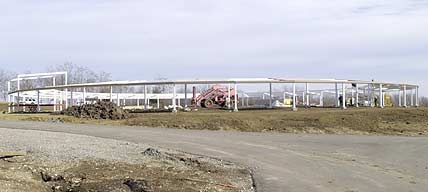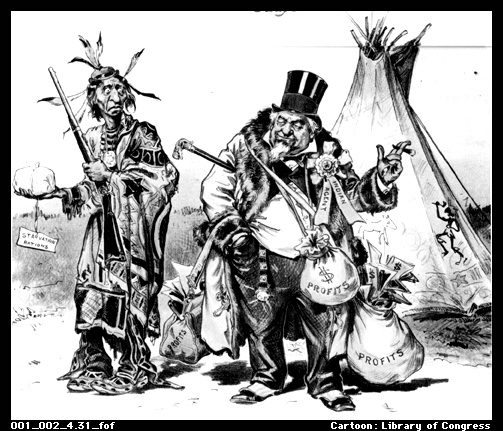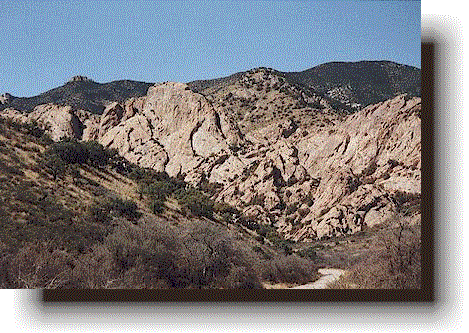|
|
Canku Ota |
|
|
(Many Paths) |
||
|
An Online Newsletter Celebrating Native America |
||
|
March 9, 2002 - Issue 56 |
||
|
|
||
|
This Date In |
||
|
North American Indian History |
||
|
from On This Date in North American Indian History at http://americanindian.net |
||
| Mar. 9, 1728: | The YAMASSEE have left their old lands in South Carolina, and moved to Florida. Many are now living near the Spanish Mission of Nombre de Dios near St. Augustine. Their anger at the Carolinians has not abated; and, they continue raiding the British settlements. Today, a force of 250 volunteers from Carolina, under Colonel John Parker, attack the mission. Thirty warriors will be killed, and many YAMASSEE will be taken as slaves. |
|
|
|
| Mar. 10, 1930: | Today, under authority of an act passed by Congress (24 stat. 388-89) on February 8, 1887, an executive order will be issued which will extend the trust period on land allotments made to members of the "PRAIRIE Band of POTAWATOMI Indians in Kansas." |
|
|
|

Prairie Band Potawatomi - Prairie Peoples' Park Dance Arbor Construction |
|
| Mar. 11, 1824: | John C.Calhoun, Secretary of War, creates the Bureau of Indian Affairs, within the War Department. Thomas McKenney is appointed its' first head. |
|
|
|
| Mar. 12, 1858: | The PONCAs sign a treaty (12 stat.997) on this date which grants them a permanent home on the Niobrara River, and protection from their enemies, both white and Indians. For these privileges, the PONCAs give up a part of their ancestral lands. Unfortunately, several years later, a mistake by a government bureaucrat will force them to share land with the SIOUX. Repeated protestations over this error will go unheard. The PONCAs would live in constant fears of attacks from the SIOUX. |
|
|
|
| Mar. 13, 1970: | Today, a legal inquiry into the boundaries of the Fort Berthold Indian Reservation in North Dakota are made. |
|
|
|
|
|
|
| Mar. 14, 1493: | Columbus writes a letter today describing the generous nature of the Indians he has encountered. He will describe them as "men of great deference and kindness." |
|
|
|
| Mar. 15, 1869: |
Today, Col.George Custer, and his troops will discover 2 CHEYENNE villages, of over 250 lodges, on Sweetwater Creek near the Texas-Oklahoma boundary. The CHEYENNE had been ordered to report to their reservation. Custer captures 4 Chiefs. He threatens to hang the Chief unless the CHEYENNE surrender. Both of the villages decide to give up. |
|
|
|
| Mar. 16, 1621: | Samoset meets the Pilgrims. |
|
|
|
| Mar. 17, 1775: |
The "Sycamore Shoals" Treaty: the Transylvania Company, headed by North Carolina Judge Richard Henderson, will purchase most of western and central Kentucky, and north central Tennessee from the CHEROKEEs. They will trade $10,000 worth of trade goods and $2,000 for this very large parcel. The CHEROKEEs will be represented by Chiefs Attakullaculla and Oconostota. The treaty will be revoked by the governments of Virginia and North Carolina as far as a private company owning the land. However, the treaty will be used by the governments as a claim on CHEROKEE lands. |
|
|
|
| Mar. 18, 1877: | More Indians visit Col.Nelson Miles, to see if he will negotiate on surrender terms. Miles informs the large group of Chiefs, his terms have not changed, with the exception that they can surrender at an alternative agency than originally stated. Miles also informs them he will wait no longer for a reply. If the Indians do not surrender soon, his troops will be deployed against them soon. Little Hawk, Crazy Horse's uncle agrees to bring the Indians into Miles' camp or one of the agencies. Nine important Indians remain with Miles as hostages, as a sign of good faith. |
|
|
|
| Mar. 19, 1851: | According to the COSTAN internet site, one in a series of treaties with California Indians will be signed today at Camp Fremont. These treaties will purport to set aisde lands for the Indians and to protect them from angry whites. |
|
|
|
| Mar. 20, 1864: | 800 NAVAJOs, mostly women, children and old men, begin the 300 mile march to Fort Sumner and the Bosque Redondo Reservation, in east-central New Mexico. The group would pick up 146 additional NAVAJOs during the march. A powerful snow storm strikes the ill-equipped marchers during the trip. By the time they reach the new reservation, 110 NAVAJOs will have perished. |
|
|
|
|
|
|
| Mar. 21, 1883: | CHIRICAHUA APACHEs are raiding American locations then returning to Mexico. On this date, Chato, Bonito and Chihuahua raid a mining town near Tombstone. This is just the pretext General George Crook needs to mount a raid into Mexico to find the APACHEs. |
|
|
|
| Mar. 22, 1621: | Massasoit, Quadequina, Samoset (a PEMAQUID), Squanto, and 60 warriors visit the Plymouth colony with great ceremony. They will freely give lands to the pilgrims. According to some calendars, this will happen on April 2nd. |
|
|
|
|
For Information on This Date in Canada visit our friends at: |
|
Canadian
Aboriginal News |
|
|
||
|
|
||
| Canku Ota is a free Newsletter celebrating Native America, its traditions and accomplishments . We do not provide subscriber or visitor names to anyone. Some articles presented in Canku Ota may contain copyright material. We have received appropriate permissions for republishing any articles. Material appearing here is distributed without profit or monetary gain to those who have expressed an interest. This is in accordance with Title 17 U.S.C. section 107. | ||
|
Canku Ota is a copyright © 2000, 2001, 2002 of Vicki Lockard and Paul Barry. |
||
|
|
|
|
|
The "Canku Ota - A Newsletter Celebrating Native America" web site and its design is the |
||
|
Copyright © 1999, 2000, 2001, 2002 of Paul C. Barry. |
||
|
All Rights Reserved. |
||


